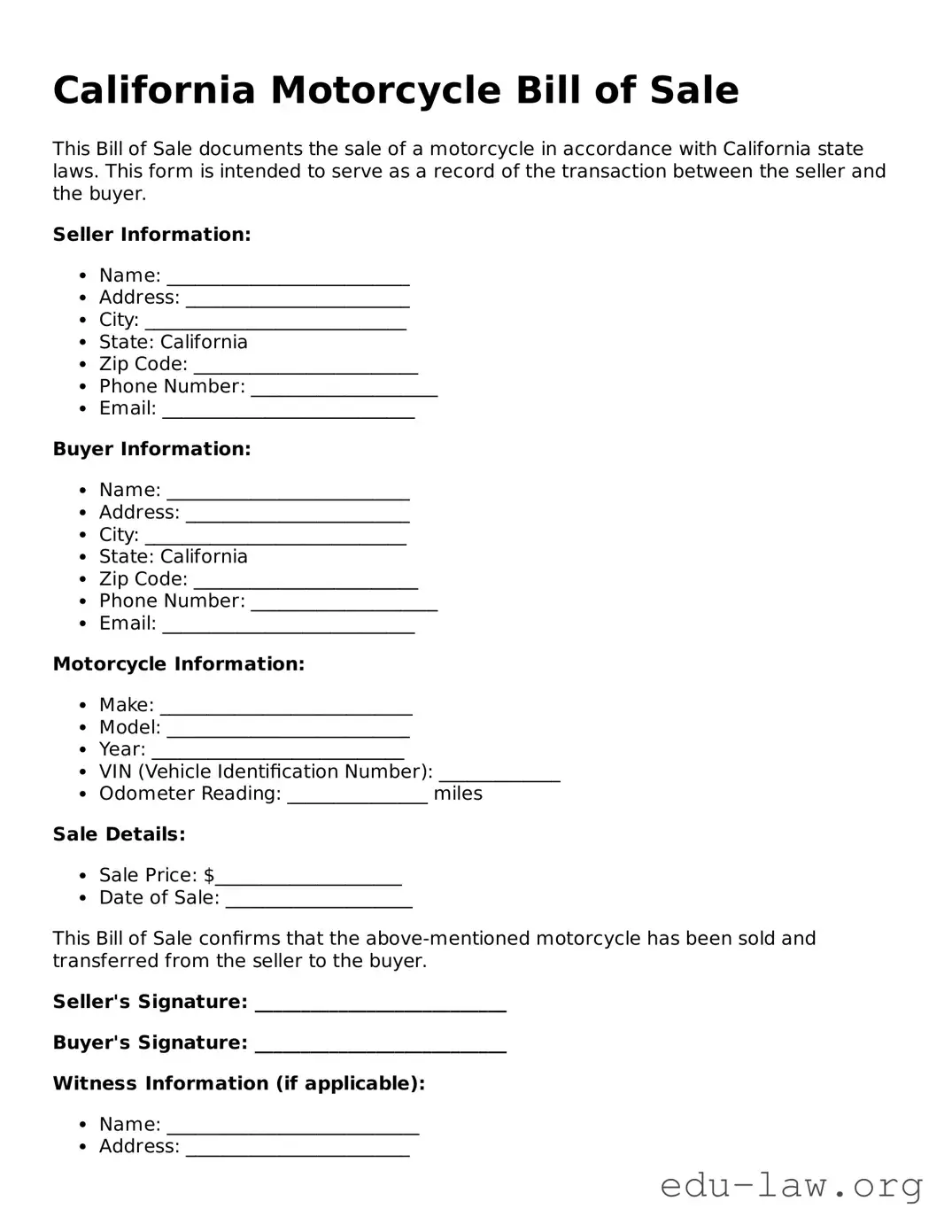What is a California Motorcycle Bill of Sale?
A California Motorcycle Bill of Sale is a document used to record the sale of a motorcycle. This form captures essential information about the buyer, the seller, and the motorcycle being sold. It serves as proof of the transaction and may be required for registration purposes with the Department of Motor Vehicles (DMV).
Why do I need a Bill of Sale for a motorcycle?
A Bill of Sale is important because it provides a legal record of ownership transfer. It protects both the buyer and the seller. For buyers, it proves ownership in case of disputes or if they need to register the motorcycle. Sellers can use it to show that they are no longer responsible for the motorcycle once it's sold.
What information should be included in the Bill of Sale?
The Bill of Sale should include details such as the full names and addresses of both the buyer and seller, the motorcycle's make, model, year, Vehicle Identification Number (VIN), odometer reading at the time of sale, and the purchase price. Both parties should also date and sign the form.
Is a Bill of Sale required in California?
A Bill of Sale is not legally required in California for motorcycle sales. However, it is highly recommended. Having this document can simplify the registration process and prevent future disputes over ownership.
Can I create my own Bill of Sale?
Yes, you can create your own Bill of Sale. There is no specific form required by law. However, it must include the necessary information mentioned earlier. It's crucial to ensure that the document is clear and complete to avoid any issues later.
Do I need to have the Bill of Sale notarized?
No, notarization is not required in California for a motorcycle Bill of Sale. However, having it notarized can provide an extra layer of protection and authenticity to the transaction. This may be useful if there are disputes in the future.
How do I use the Bill of Sale when registering my motorcycle?
When registering your motorcycle with the DMV, you may need to bring the Bill of Sale along with other documents, such as the title and proof of insurance. The Bill of Sale will help verify that you are the legal owner of the motorcycle.
What if I lose my Bill of Sale?
If you lose your Bill of Sale, you can request a copy from the seller if they retain a duplicate. If that’s not an option, you may need to recreate the Bill of Sale with the same details and have it signed again by the seller, if possible.
Can a Bill of Sale be used as proof of ownership?
A Bill of Sale can serve as proof of ownership, especially when registering with the DMV. While it may not replace a title, it helps establish that the buyer is the legitimate owner after the transfer.
What if I have more questions about the Bill of Sale?
If you have more questions about the Bill of Sale or motorcycle transactions, consider checking the California DMV website or consulting with a legal professional. They can provide further details and guidance tailored to your specific situation.
